To increase the capacity of your electrical system and ensure adequate power supply, consider adding wiring from your meter to the breaker box. However, this type of wiring job is not for beginners — it requires an experienced hand and knowledge about local building codes. If you’re considering taking on this project, then read on as we’ll provide detailed steps on how to properly run wire from the meter to the breaker box in order for you to finish with success.
How to Wire a Breaker Box From Your Meter
Step 1: Preparation
It’s important to turn off power at the main breaker in your meter box before starting the wiring process. This will ensure safety during the process.
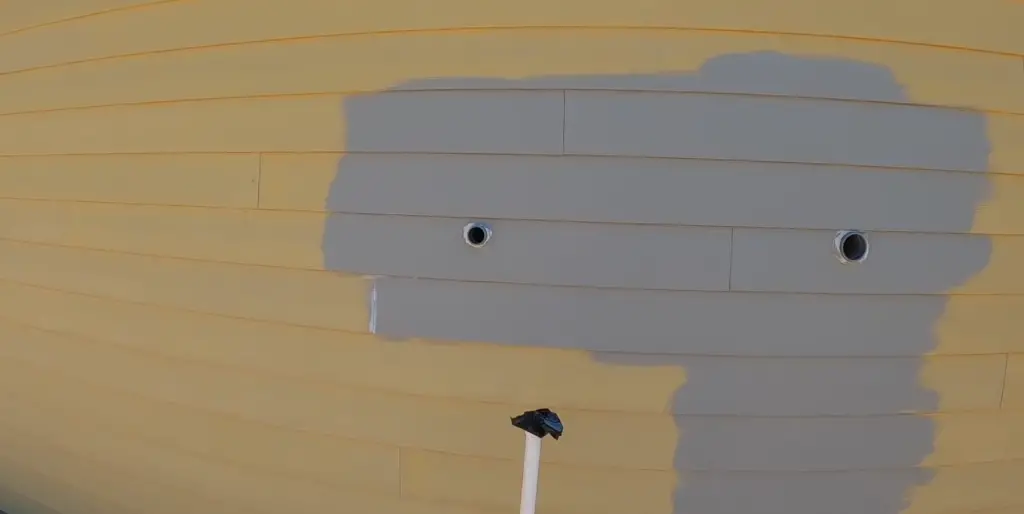
Step 2: Switch Your Power Switch Off
Before, it is crucial to verify that all power has been turned off completely. If there are multiple switches controlling different circuits, make sure each one is switched off, or else you risk shocking yourself when working with wires. [1]
Step 3: Connect Ground Wire
Using a screwdriver, disconnect the ground wire from its current connection and then make a new connection. Make sure that it is securely fastened in place. You may also need to replace any damaged or eroded parts of the ground wire before connecting it.
Step 4: Connect Neutral Wire
To connect the neutral wire in your breaker box, look for the white-colored wire and connect it to the terminal block. All of the wires should have their own terminals, so make sure you attach the neutral wire appropriately.
Step 5: Connect Hot Wires
The hot wires are the black colored wires that should be attached to their own terminals. Take care when connecting the hot wires, as you don’t want them to come in contact with any other wire. Furthermore, make sure that the circuit breakers for each circuit are shut off before connecting these wires.
Step 6: Secure Breaker Box Cover
After connecting all wires, secure the cover of the breaker box and turn on the power switch. Before turning on the main switch, test all circuits to ensure that the wiring is installed accurately and operating properly.
Step 7: Test Your Work
Before using any of your new electrical outlets or lights, make sure to test each one for proper function. If everything looks good, you should be ready to enjoy the convenience of having a safe and efficient electrical system in your home. A qualified electrician should inspect all wiring installations before use to ensure safety and compliance with local building codes. Working with electricity can be dangerous, so always exercise caution when working with these types of projects.

What Wire Goes From Meter to Panel?
The Service Entrance Cable (SER) refers to the wire connecting the meter and the breaker panel. SER cable is designed specifically for connecting service equipment, such as an electric meter or a breaker box, to a main distribution panel. The cables typically consist of two insulated conductors and one bare ground conductor encased in a non-metallic sheath. The number of conductors and their gauge size will depend on the amount of power needed in the home – usually either 4/0 aluminum or 2/0 copper. It’s important to make sure you’re using the correct sized wiring for your application since undersized wiring can lead to dangerous overheating and fire hazards. [2]
When running SER cable, it’s important to ensure that it is securely fastened and properly supported, as per the local building codes. The cable should also be routed away from any sources of heat or moisture. Once the cable has been installed, it should be covered with a suitable conduit or raceway for additional protection.
It’s also important to make sure that all connections in the breaker panel are done correctly and safely – including using appropriate wire nuts or other splicing devices. All wiring should be tested before power is turned on to make sure everything is working properly. Following these steps will help you install your SER cable correctly and safely so that you can enjoy years of safe and reliable electrical service in your home.
What Is Code For Electrical Panel?
When running wire from a meter to a breaker box, it is important that you follow local codes and regulations. This includes making sure that you use the correct type of wiring, which should meet or exceed local code requirements for electrical service in your area. Additionally, any connections made between the meter and the breaker box must be done properly, with appropriate connectors and splices. Finally, all wiring must be installed and secured according to manufacturer instructions and applicable codes.
The National Electrical Code (NEC) defines minimum safety standards for all types of electrical installations in residential and commercial properties. In particular, it contains specific provisions related to panel boards (also known as breaker boxes), meters, disconnects, branch circuits, overcurrent protection devices (such as circuit breakers), and more.
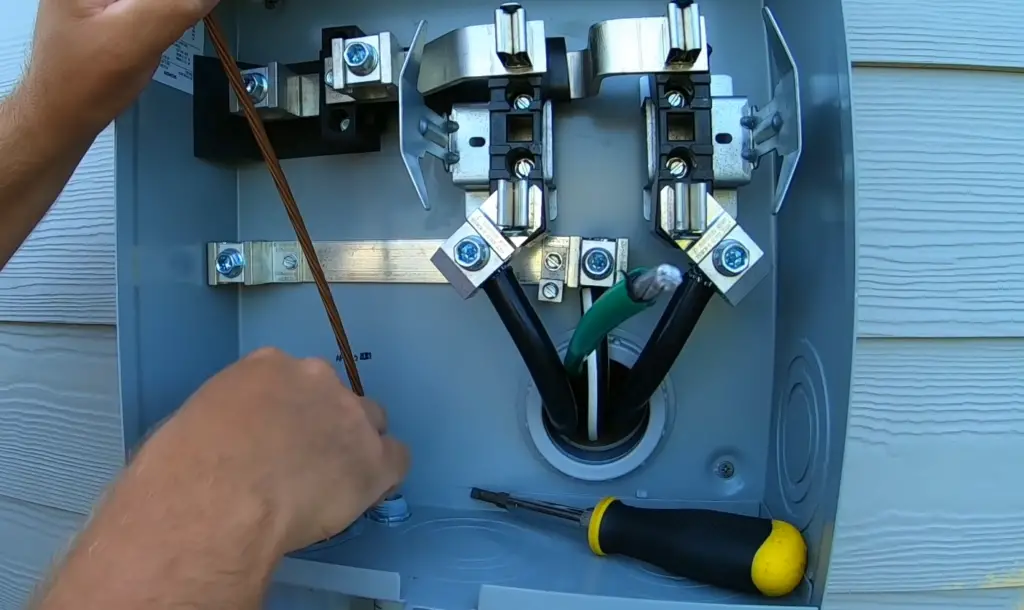
When running wire from a meter to a breaker box, it is important to be aware of the requirements outlined in the NEC and any applicable local codes or regulations. This includes making sure that any connections made between the two components are accessible and properly labeled. Additionally, all wiring must be installed safely and securely according to manufacturer instructions and applicable codes. Finally, all exposed wires must be covered with appropriate insulation to protect them from accidental contact or damage.
By following these guidelines and adhering to local codes you can ensure your project is safe, efficient, and compliant with legal standards. Doing so will help keep your property safe for many years to come! [3]
How to Ground a Meter Box?
Once the wire has been run from the meter box to the breaker box, it is important to ensure that both boxes are properly grounded. This helps protect people and property by providing a safe route for electricity to travel should an overload occur. To ground a meter box, you will need:
- Ground rod – This metal rod is driven into the earth outside of your home, usually near the meter itself. It provides a path for any excess electricity to flow away from your home and into the earth safely.
- Wire – You will need some insulated wire designed specifically for grounding applications in order to connect your meter box to the ground rod. These wires come in several sizes, so be sure to check with your local hardware store to find the right one for your needs.
- Ground clamp – This metal clamp is used to attach the wire to the ground rod, creating an electrical connection between them. It is important that this connection be secure and free of any corrosion in order for it to properly work.
Once you have all of these supplies gathered, you can begin grounding your meter box. First, install the ground rod according to the manufacturer’s instructions and bury it at least 6 inches deep into the soil outside of your home. Next, attach one end of the insulated wire to your meter box using a ground clamp or other suitable mechanical fastener. Then, run the other end of this wire over to the ground rod and attach it securely. Finally, check all of your connections to make sure they are secure, and you’re finished! Your meter box is now properly grounded and ready for use.
Grounding your meter box is an important step in ensuring the safety of your home’s electrical system. Follow these instructions carefully to ensure that this job is done correctly and safely. If you have any doubts or questions about the process, be sure to contact a professional electrician for help. [4]

Where Does Ground Wire Go in a Meter Box?
The ground wire in a meter box is connected to the grounding rod and is used to provide a safe path for electricity to travel during an overload. The ground wire should be attached to the panel or junction box located beneath the meter, then run over to the ground rod and securely attached. It should also have its own dedicated ground clamp or other suitable mechanical fastener. Finally, all connections should be checked regularly for corrosion or other damage that could affect their performance. Following these steps will help ensure your home’s electrical system is as safe as possible. If you ever have questions about how to correctly install your meter box’s ground wire, consult a professional electrician for advice. [5]
Why Are Neutral and Ground Tied Together?
The neutral and ground wires used in electricity are tied together for safety reasons. This helps ensure that electricity is properly grounded, which prevents shocks and other dangers associated with electricity. When the neutral wire is connected to the earth at the breaker box, it creates a path for any stray current to return back to its source without flowing through people or other objects in its way. The ground connection also serves as an alternate path of least resistance for any fault current that might occur.
By tying together these two wires, it ensures a safer environment by allowing energy to travel on both paths safely and properly. Both connections should be secured tightly so there is no risk of a loose connection or potential electric shock occurring due to incorrect wiring. [6]
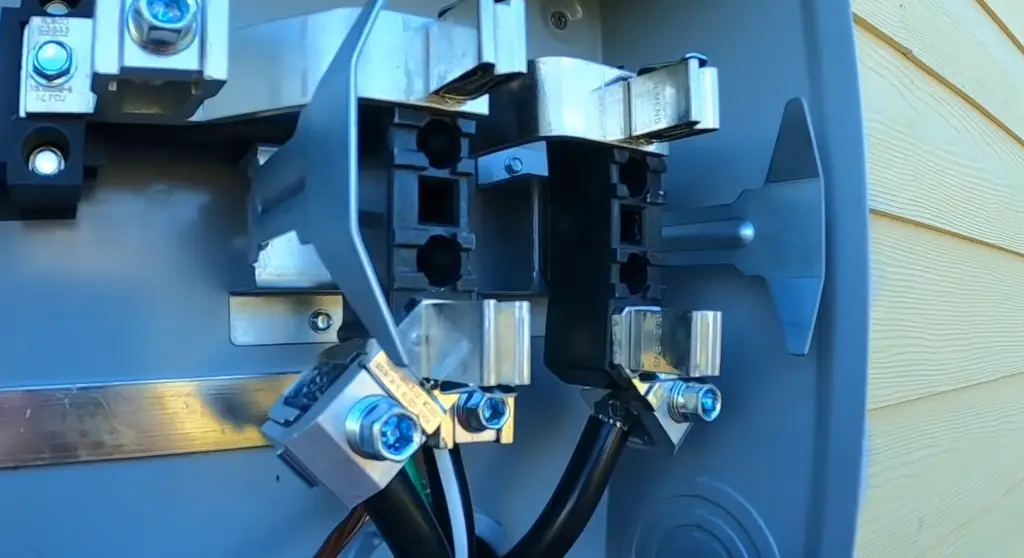
FAQ
What wire goes from meter to breaker box?
It is typically best to use THWN-2 copper or aluminum wire, depending on the local building codes. Some areas may require you to use a specific type of wiring for this application. Check with your local building department for more information.
What size wire should I use from meter to breaker box?
The size of the wire used will depend on the current load and amperage rating of the circuit being installed. Generally speaking, it is recommended that 14/2 AWG (American Wire Gauge) be used for circuits up to 20 amps, 12/2 AWG be used for circuits up to 30 amps and 10/2 AWG be used for circuits up to 40 amps. Check with your local building department or a certified electrician for more information.
Are there any special considerations when running wire from meter to breaker box?
Yes, there are a few things you should keep in mind when running wire from the meter to the breaker box. First of all, you must use an appropriate type and size of wire for this application. Additionally, it is important to ensure that all connections are secure and free of corrosion or damage. Finally, be sure to check with your local building department for specific requirements before starting any wiring project.
How do you run electrical wire to a breaker box?
First, you will need to determine the number of conductors (wires) that are necessary for your project and how long each one needs to be. This information can usually be found in the instructions or on the product label. You may also want to consult a professional electrician if you’re unsure about any aspect of your wiring project. Next, make sure that all pieces of equipment such as outlets, switches, and other items have been safely grounded before proceeding. Then, begin running the wires from the meter box toward the breaker box. To do this correctly, use an appropriate wire size for your application and connect it securely with fittings that can accommodate both boxes. Make sure not to overtighten these as they could cause problems with the wiring. Once connected, use a circuit breaker and connect it to the wires in order to protect against any overloads.
Following these steps will ensure that you safely run electrical wire from the meter box to the breaker box.
How does electricity flow through the breaker box?
Electricity flows into the breaker box from a meter that is attached to it. This meter measures usage and sends that information on to the utility company for billing purposes. Inside the breaker box, there will be a main switch where electricity enters and then branches out to various breakers or fuses depending on the type of panel. Each breaker controls one specific circuit in your home and is designed to trip in case of an overload situation or short circuit, cutting off power to that circuit. The wires leading from each breaker are connected directly to outlets, switches, appliances, and other electrical fixtures throughout your home. In order for this system to remain safe and functional, it’s important to wire everything correctly within the panel itself as well as connecting wire from the meter to the panel.
What is the difference between a breaker box and an electrical panel?
A breaker box and an electrical panel are essentially the same thing. Both terms refer to a metal enclosure that houses circuit breakers or fuses which control electricity to different parts of your home or business. Generally speaking, when referring to residential homes, the term “breaker box” is used while commercial buildings will usually use the term electrical panel. It is important to ensure all wiring is done correctly within the panel/box in order for it to work properly and remain safe. This means connecting wire from the meter to the panel as well as ensuring all wires leading from each breaker are connected securely in order for power to reach outlets, switches, lights, etc throughout your home safely.
Useful Video: How To Run Wire From “Breaker Box” To “Outlet”
Conclusion
Running wire from a meter to a breaker box is an important part of any electrical system. It’s essential that the wire is correctly routed and all connections are secure, as this could cause safety issues in the future. Depending on your situation, you may need to hire an electrician to properly install the wiring. However, by following these steps, it is possible for anyone with basic knowledge about electricity and tools to do the job themselves. Make sure to take all necessary precautions and adhere strictly to local building codes when running wire from your meter to your breaker box. With proper planning and careful execution, you can connect a meter to a breaker box safely and effectively.
References
- https://www.galvinpower.org/run-wire-from-meter-to-breaker-box/
- https://www.thespruce.com/how-to-wire-an-electric-meter-1152761
- https://www.icrfq.net/how-to-run-wire-from-meter-to-breaker-box/
- https://conquerallelectrical.ca/how-to-wire-breaker-box-from-meter/
- https://www.angi.com/articles/how-to-wire-breaker-box.htm
- https://www.electricaltechnology.org/2013/05/wiring-of-distribution-board-single.html









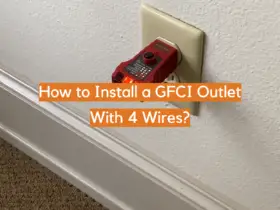
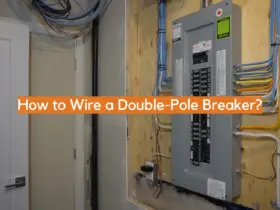
Leave a Reply